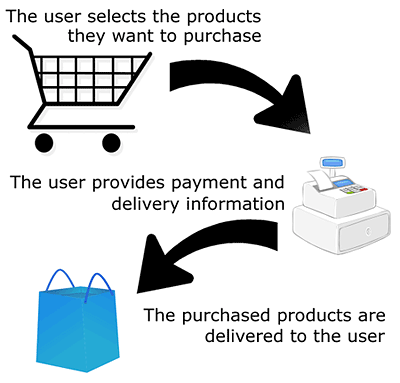Ecommerce
The ecommerce feature provides an interface where site visitors can navigate through an online store, ordering items through a customized ecommerce system. These systems can provide different ordering methods as well as payment and delivery options.

The ecommerce feature consists of the following components:
- Ecommerce form page
-
The ecommerce form page allows the creation of a form used for ecommerce transactions. Fields are added to the form to collect different user information, such as a name and delivery address. The form page is then linked to a payment method.
- Ecommerce default delivery method
-
Several delivery methods can be configured to allow users to select how they will acquire the items they are purchasing. These delivery methods include ecommerce forms specific to the delivery method selected.
- Ecommerce payment gateways
-
Payment gateways can be attached to an ecommerce form, providing a secure payment system. The payment gateway assets compatible with the ecommerce feature are:
- Product
-
Products are added to a site for users to purchase. Name, value, and tax options are included in the product details and descriptions and specifications. Further information can be assigned to a product with applied metadata.
The Ecommerce form page can be used for a variety of functions such as:
-
Order logging services
-
Quantity tracking services
-
Setting taxation rates
-
Configuring delivery fees
-
Setting flat fees
-
Managing delivery emails for both the buyer and seller.